I was excited at first when I saw that Microsoft had announced their new round of Surface line of computers — until I saw the details. The updated Surface Go is indeed a nice bump, as the form-factor of the Surface 3 made it one of my most “fun” computers, but the Surface Book 3 really gives me a sinking feeling. Let me explain why.
It was 2015 when Microsoft announced the company’s first true “laptop” (as opposed to Surface tablet), the Surface Book. The market for hybrid/2-in-1 devices was very much undeveloped at the time, and Microsoft was leading the way with their undeniably innovative reference designs for both Surface and Surface Book devices.
Despite the usual first-gen product bugs and hitches, critical reception was quite positive due to the novel design, battery life, and flexibility offered. There just weren’t many other laptops at the time that offered a reasonable solution for people who wanted both a laptop and a tablet.
The Surface Book 2 kicked things up a notch in 2017 with the addition of a powerful (at the time) 15-inch variant with Nvidia’s GTX 1060 Max-Q GPU and a U-series quad-core hyperthreaded CPU, making gaming a real possibility on such a unique form-factor. The SB2 was still a bit big and clunky for its specs, and the it suffered from some design flaws such as (still) no TB3, draining the battery while plugged-in and gaming as well as its eye-watering price tag — but if you liked the idea of having a laptop that could also be a tablet AND could play some games or edit video on, there was not much other competition.
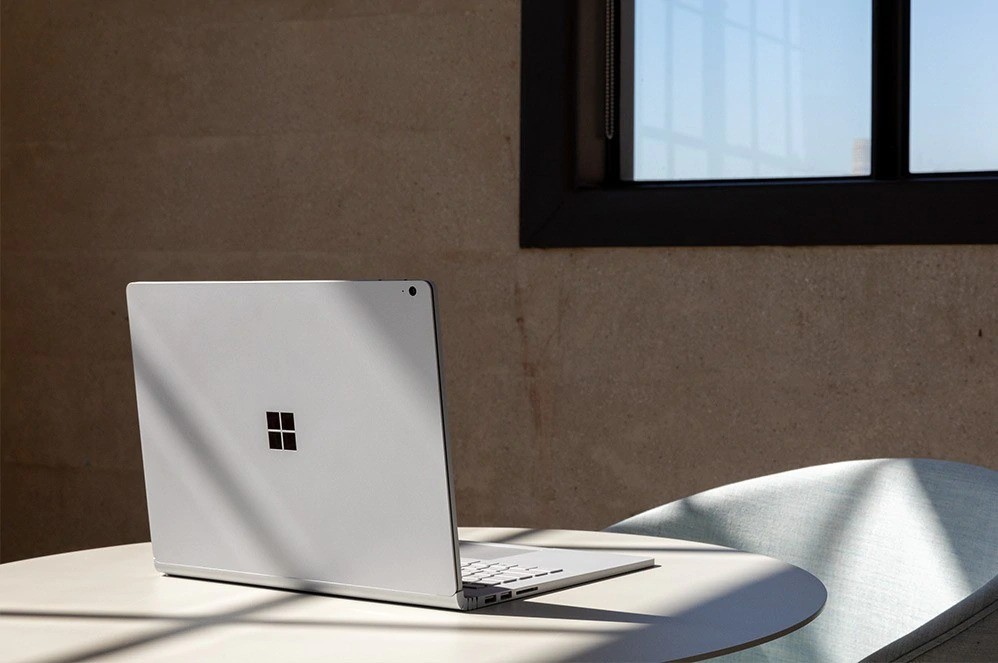
The Surface Book still stands out with its unique design. But has it reached its limits? (Source: Softpedia.com)
If you look at the full list of specs for the SB3 (13 and 15-inch here), they don’t look too bad. Both models are getting the obligatory upgrade to Intel’s 10th-gen Ice Lake CPUs with improved IRIS graphics (i5-1035G7 as an option for the smaller 13-inch model, and i7-1065G7). On the dedicated GPU side, it’s been kicked up to an GeForce GTX 1650 for the 13-inch and GTX 1660 Ti Max-Q for the 15-inch. Compared to the SB2’s Nvidia GTX 1060 Max-Q, that should mean an additional 10% in graphical performance. Those aforementioned IRIS graphics should also mean 50% better-integrated GPU performance. The GTX 1660 Ti Max-Q is a bit stronger than the GTX 1650, but you can expect CPU performance to be equal between smaller and larger sizes, meaning you are going to be getting less for your money with the 15-inch SB3 versus the 13-inch in comparison to the 15-inch vs 13-inch SB2.
Unfortunately, that’s about it for the SB3’s upgrades. The 15-inch model only has the option for quad-core Ice Lake CPUs, just like the 13-inch version. There’s not just no 6-core H-series CPUs, but not even 6-core 10th gen U-series CPUs like the i7-10710U. Instead, Microsoft has opted to jump on the Intel-pushed Ice Lake bandwagon, for better and worse. For comparison, the i7-9750H trounces the i7-1065G7 soundly in all but the most specific single-core operations. But so does the 25W i7-10710U, found in Dell’s 2019 XPS 13.
There’s a good reason MS didn’t use an H-series CPU in their 15-inch SB3, however: Because the device is a detachable, the CPU, memory, and storage are kept in the tablet portion — right behind the screen. Given that Intel’s H-series are notoriously power-hungry and hot, it would be nearly impossible to properly implement such a CPU in this form-factor. But even a 6-core U-series CPU would still be better for most people opting for the 15-inch option, as those extra cores are valuable for media work. Couldn’t MS have offered the 6-core 25W i7-10710U as an option, so we wouldn’t be paying north of $2100 USD for a 4.2lb 15-inch quad-core laptop in 2020?
This third iteration of the Surface Book line has (I think) revealed the corner that MS has designed themselves into. It’s quite ingenious to have the GPU and its cooling in the keyboard deck, but such a feat is not possible for the CPU. And while the design is unique, it’s now more and more apparent that it’s a bit questionable, as well. There are few manufacturers still making “detachable” style hybrids, and for good reason; they’re complex to design, easier to break, less upgradable, and simply clunkier than swivel-hinge devices like Dell’s 2-year-old XPS 15 9575. With it’s chunky bezels and dimensions, high price tag, lack of TB3, and quad-core CPU, the Surface Book 3 looks like the last update to a product line Redmond just doesn’t care too much about anymore.
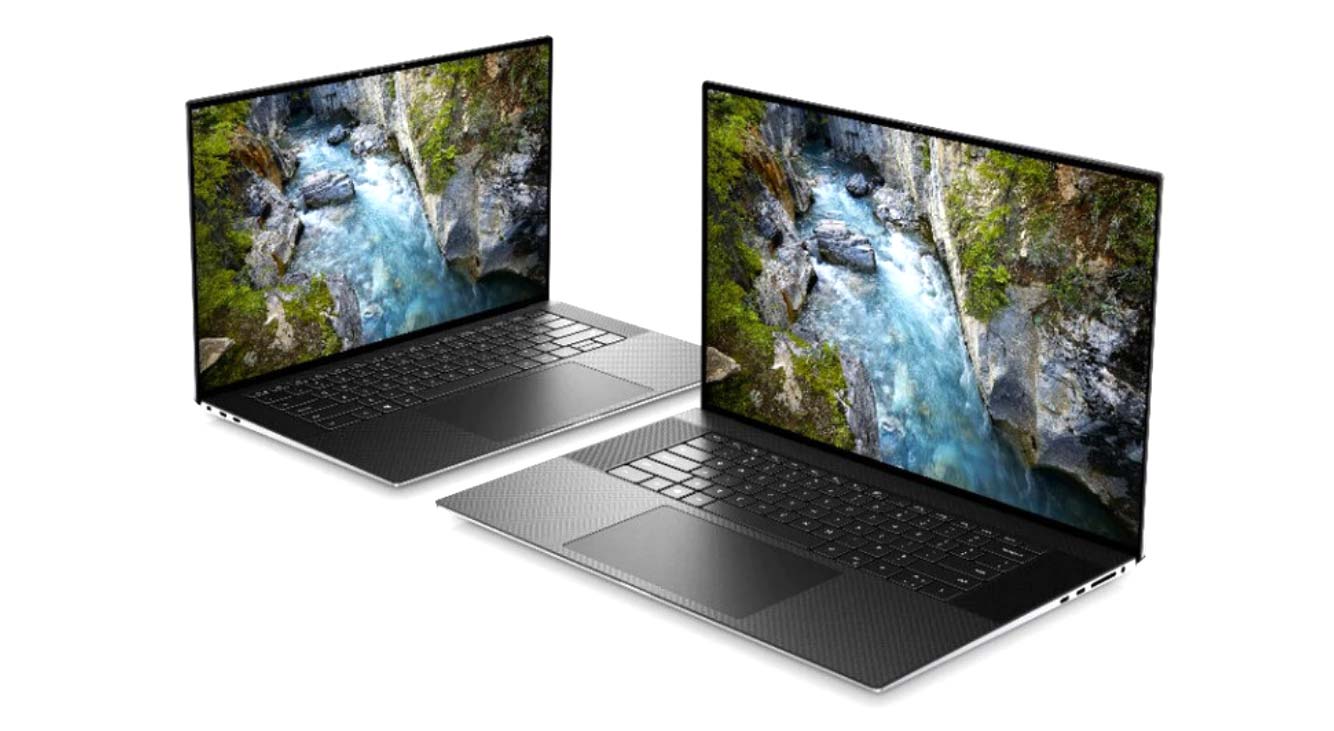
XPS 15 9500 (left) and XPS 17 9700 (right) 2020 models
For “luxury” laptop buyers, Dell’s upcoming XPS 15 9500 might not have a detachable display, but it offers much faster CPU and GPU performance, a 16:10 touch-enabled display as well, sleeker design, TB3, and the ability to upgrade RAM and storage. It’s also likely going to be much cheaper than the 15-inch SB3 with dedicated graphics. For people who need hybrid form-factors, Dell also has the cheaper XPS 13 2-in-1, and more feature-rich and practical Latitude 7xxx series 2-in-1, too. Given the state of the economy and lack of advancements from Intel and Nvidia (not to mention Microsoft themselves) in the past 1-2 years, I just can’t see the SB3 performing well in such a competitive market. From here, it looks like Redmond needs some fresh blood (or maybe just a little kick in the pants). :)
I am totally off the mark? Are you excited about the new Surface Book 3? Let us know in the comments!

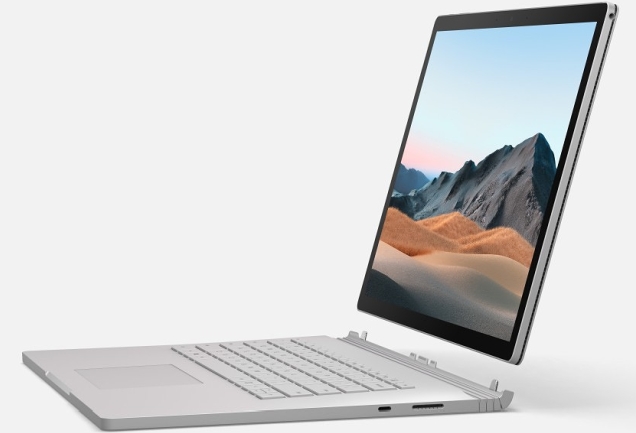

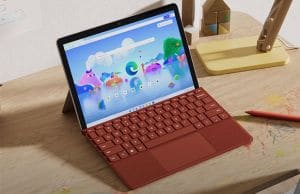
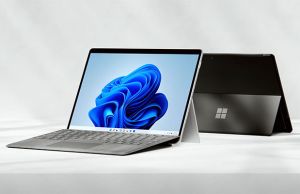
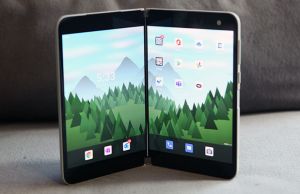

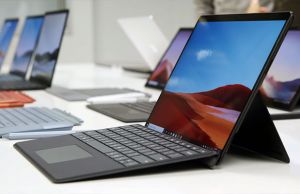




Goni
May 9, 2020 at 4:41 am
Nice review. I liked the part where you used this in the real world as the target audience this product was designed for.
Douglas Black
May 9, 2020 at 4:53 am
Hi Toni,
This is not a user review, it's an analysis of the product in a market. The target market buyer should probably buy a surface book 2.
Lé
May 9, 2020 at 7:32 pm
Strongly agree, just got a slightly used 15 inch SB2. Maxed out except for ssd. $1200. SB3 isn't worth it for most people
kek
May 9, 2020 at 5:33 am
Hmmmmmm well while I agree they could have used the 25W i7 option, it would probably generate more heat either way, and throttle. So, all in all, perhaps they could slash down the price a little bit and call it a day.
LHPSU
May 9, 2020 at 5:43 am
There are only 2 other options on the market if you want a convertible with 1650 graphics or better – the HP Spectre x360, and the Lenovo Yoga C940. Both top out at the 1650 and are heavier than the 15" Surface Book. At 13", there are literally no other options.
The XPS comparison doesn't work; if you're not in the market for a convertible, you shouldn't be in the market for the Surface Book at all. In any case, the XPS 15 tops out at a 1650 Ti, so I don't see beating the Surface Book on GPU alone.
It's a niche market, but the Surface Book 3 has no real direct competitors in it.
Douglas Black
May 9, 2020 at 6:36 am
This is a good point, and I realized I should have fleshed out that more in my concluding paragraphs. Thanks!
Eric Fisher
May 9, 2020 at 4:39 pm
Not a review but an analysis of one particular use case which is incorrectly generalized to the general user community. Worse, the review ignores the use case for which the Surface Book was designed. This is more a hit piece then a review.
Douglas Black
May 10, 2020 at 12:03 am
What use case does the SB hit that the Latitude 7400 2-in-1 does not?
Nick Kordich
May 12, 2020 at 4:17 am
"What use case does the SB hit that the Latitude 7400 2-in-1 does not?"
The two obvious use cases (which is what had me considering a 2-in-1 in the first place): gamer/game developer and sketchbook artist.
The Latitude 7400 2-in-1 doesn't even have *Iris graphics*, let alone a dedicated GPU so powerful it could run a VR headset. I have a Yoga 720 with the next most powerful GPU in 2-in-1: a GTX 1050. That gives the Yoga remarkable capabilities over Iris graphics, but it doesn't approach the Surfacebook 3.
As an art tablet, I have tried many 2-in-1s and they've all been too cumbersome: heavy, 16:9 screen, hinge in the middle, keyboard on the back – all these things remind you you're holding notebook that can work this way but really doesn't want to. The detachable screen on the Surfacebook is a 3:2 unibody slate that's as little as half the weight of the 7400, and compares more closely to the iPad Pro 12.9 than the 7400 (and I'd use the former over the latter). It does have a shorter battery life, but if you're going to use it this way for hours, you can reverse the base and not leave a keyboard impression on your forearm from resting it there.
I'm pretty much over 2-in-1s – they've come far, but they're inevitably a compromise, and I've been better served with a tablet and notebook pair. The oddball second gen Yogabook (with its e-ink keyboard) was probably my last 2-in-1 buy, though I have to give the self-decapitating design of the Surfacebook credit for taking the ability to do it all as far as it did.
Douglas Black
May 12, 2020 at 4:47 am
The GPU is a point I knew I was missing. :p
But your conclusion seems to be the same as mine, I think? i.e. the compromise of a 2-in-1. It sounds like you have a lot of experience using one professionally for VR asset development.
I think I just don't see where MS is going to go with this form-factor given the obvious CPU thermal limitations. A tablet is going to struggle with anything over 15W with intel's chips — only ARM is going to provide more horsepower at lower TDPs. Is MS hoping that Intel/AMD will have viable 10/7nm CPUs for the tablet section next year?
Todd
May 10, 2020 at 12:19 am
SB1 came out in 2015. SB1 performance base came out in 2016.
Douglas Black
May 10, 2020 at 12:20 am
Thank you for this correction!
Mizter2
May 9, 2020 at 4:30 pm
I feel the issue is that they limited themselves by sticking with only Intel CPUs. I mean, let's face the facts here. Intel no longer offers the best notebook CPUs unless you need quicksync. Though I'd argue it's not worth the driver issues (which both of my 1065g7 machines are plagued by), but I digress.
The SB3 could have stuck to its roots by opting to be an early adopter of the 7nm notebook CPUs. A 4600u or 4800u would make for a beastly, efficient, and slim device with even better iGPU. Perhaps the SB4 will make that leap.
Rob
May 9, 2020 at 8:40 am
Thanks for the review. I've been waiting for the SB3, and now that specs are out, I'm not going to buy one. Modest bump in specs over SB2, still no TB. Do you know if the display outputs are connected to the discrete Nvidia graphics, or integrated graphics only? On the SB2 that was one of my main complaints that I hoped would be fixed on this release.
All I want is a convertible that will run occasional VR.
Douglas Black
May 9, 2020 at 9:14 pm
I don't see how they could directly connect it. The upside of that is you get better battery life when on DC and using external monitor
Amit
May 9, 2020 at 6:52 pm
I never understood the intense criticism surface books get for their chunky bezels. Unlike any other 2 in 1 on the market, this one is detachable. Try holding a tablet in your hand and using the entire screen. You need the bezels to hold it properly. All other 2 in 1's do not detach, and so nobody would hold them like a tablet when they are 3+ pounds and the keys are exposed preventing a somewhat firm hold. This function over form design really has its uses.
I may actually disapponted that they didn't offer a version that has this form factor but offered a bigger battery or something else instead of a powerful gpu in the keyboard. There are so many other 2 in 1s in the market, especially business side, that don't have a powerful gpu. That should tell you that there is a significant market of users who want good battery life of some other thing but not intensive gpu capability. That would have been ideal for me and possibly cheaper. Microsoft, please don't go the apple way of pricing out a lot of people to get something with a uniquely good usability experience.
LHPSU
May 10, 2020 at 6:31 am
They already have the Surface Pro in that market.
Amit
May 10, 2020 at 7:08 am
Not really. Surface Pro is not 15 inch, and is not really lap-able.
Fox Tobias
May 10, 2020 at 8:47 am
I loves me mah bezels. They're where mah thumbs go. Don't want no hot buttons, no sliders, no secondary screens. Just a place for my thumbs.
Then again, I carried my Pro 4 around everywhere for years, used it for hand scrawled notes and sketches, held it up to take pictures with its janky camera app, and sketched out design ideas on it that the pen let me then annotate and even airbrush those pics in Photoshop and similar. Did some corporate profile pics with that bad boy, as well as logo design, actual art, and UI sketches as well.
That's the thing, though. The Surface line isn't about optimizing and specializing any one thing. It's about showcasing everything the form factor is capable of at an acceptable (or better) level. Let others specialize, you know? Microsoft just wants to show what can be done. That, though, is uniquely expensive in its own right, given that Microsoft are the ones investing in specialized hardware and the software to power it.
Tony
May 9, 2020 at 6:54 pm
I think you make some good points regarding the limitations and tradeoffs of the form factor. But, I think you may have overlooked some of the things that differentiate the surface from the Dell options you mentioned. Namely, the surface book has way better battery life (vs the high res Dell screen option) and and an active digitizer (not just a touch screen).
Honestly though, if someone doesn't use the digitizer and crazy battery life, there are much much better options. Taking those off the table changes the value proposition.
Rob
May 10, 2020 at 1:56 am
The 15 inch is a bad form factor for the SB in general. Having it be a detachable truly limits the hardware available for it. I have the original SB with performance base, and while I've gotten a few good years out of it, it has definitely shown its age. I don't need the detachable and would love a powerful surface device without any limitations, but it's seeming unlikely.
Douglas Black
May 10, 2020 at 1:57 am
Thanks for adding your voice. I'm actually really interested in what actual SB owners think of this most, because you never know a machine until you rely on it daily.
Fox Tobias
May 10, 2020 at 6:58 am
I'll start by saying the Microsoft really nailed it on the Surface series when it comes to versatility. And, having gotten a free upgrade on a Pro 4 at a Microsoft store just by asking how much it'd cost to do so during a digitizer warranty exchange (2 months out of warranty no less!), I'm going to say they've nailed customer service as well.
For a designer type like myself, the Book 2, with its immense screen real estate and that pen, now with tilt sensitivity, competes more with Wacom than Dell. And the price and the removable "clipboard" made it a no brainier… If one has the money.
That said, few people actually talk about the pen functionality of their competing devices, and it's barely even an afterthought in most reviews if it's mentioned at all, so for somebody like me, I don't see many, if any, solid alternatives that let me draw and sketch and scrawl out notes on the fly.
I think Microsoft has found itself a niche, more than anything. It's not really about building the most affordable or expensive or even the absolute most powerful device, but more about showing what hardware their software is capable of working with. If others do it better, Microsoft still sells their software, so they win.
That said, my Pro 4 is showing its age and my bank account is saying no to the Book 3. And I'm totally taking suggestions on alternatives with similar specs and a lower price.
Belgarath
May 10, 2020 at 9:47 pm
I just can't agree with this article at all. The strength of the device is that though it isn't the best at anything, it is great at just about everything. It is the most versatile machine out there all these years later. For someone who wants that versatility while still being strong with everything it does, this is the only option.
Though I love the screen, bezels, and design of the XPS line, they are clam shells. That defeats the purpose of 1/2 of why someone would get a Surface Book. That flexibility isn't a gimmick, its a use case. There is the Dell XPS 2&1, but all these 2&1s like that device, the HP Spectre, and the Lenovo C940 are too heavy, bulky and uncomfortable in tablet mode, especially since you are literally holding the keyboard in your hand while using it unless you lay it flat on a table realizing you are laying the keyboard flat on a table.
The fact that as a gamer, I can take advantage of that 1660ti on the 15" with just about every modern game with good settings, the fact that I can do video editing, the fact that I can use it as a tablet while laying on the couch or in bed, the fact that I can put the screen on backwards to have it closer to my face on the table at a coffee house and watch youtubetv without the keyboard in front of me, the fact that its screen has a good resolution, about 400 nits, and colorful enough with a keyboard that actually is a great keyboard to type on, the fact that it has above average audio for a laptop, etc etc etc….it's that versatility that makes is such an amazing device. Underestimating that usefulness isn't poor judgement, not a sign that Microsoft no longer cares.
Belgarath
May 10, 2020 at 9:51 pm
..EDIT…I meant that "underestimating that usefulness "Is" poor judgement, not a sign that Microsoft no longer cares. Forgot to mention as well that the fans that don't sound like airplanes taking off like a gaming PC, or overheat like many of these compact devices do with way to hot average temperatures, goes a long way as well.
Tuffy
May 13, 2020 at 10:44 pm
Couldn't agree with you more, I have owned SB1 and SB2 has been my work machine since it came out and I'm pumped to get my new SB3 next week. The SB1 connecting hinge was a big flaw by SB2 nailed it for me. I love that I can pop off my screen and lay in bed or even better use it on the treadmill or stationary bike.
Philip Jacobsen
May 14, 2020 at 3:10 am
Concur! Have been coding with a surface book for several years with nearly never a day off — rock solid devices flawlessly built, quiet, and unexpectedly am finding the detachable screen indispensable at times. Excellent device – highly recommended!
Douglas Black
May 10, 2020 at 10:07 pm
Thanks for your comments highlighting its versatility, Keith. I agree it's one of the most versatile devices around in terms of design. But I'm not sure how MS can go forward with this design given the thermal limitations Intel and AMD are facing now. May I ask which Surface Book you have, and what you generally use it for?
Banana
May 23, 2020 at 1:31 am
Wow. Such great article and comments leaving me conflicted. Coming from an broken Surface Pro 3, I was definitely in the market for a book 3 15". I used to write notes and draw plans till I broke the screen, it's been a desktop life for a while. However I still feel we consumers gave been left with an already dated revision. Why no RTX? Especially if they can drop the Quadro in there! Why use 1065G7 and not 10710 when you have a dedicated card? Where is the innovation? Say a kickstand for when it is seperate? As a fan who has waited 6 months+ for this update I am disappointed not excited – that is the issue Microsoft faces. If only they'd waited another 6 months and given us tiger lake + RTX, that at least would have been interesting and market defining.
Ardi
June 9, 2020 at 2:46 pm
So conflicted following these great comments! In the market for a new computer – wont be doing any coding or heavy content creation but am super intrigued by the tablet mode to get my reading and web browsing done at home either on the couch or in bed. Price is high but am willing to pay a bit over for extra functionality.
Wondering whether people think its worth it? 15in vs 13in for a big guy who'll be doing alot of reading on it? As I said, i dont need it to be the fastest or best graphics editor, just need it to multitask btw MS Office, web browsing and the occasional podcast.
Tony
June 9, 2020 at 11:38 pm
I have a Surface Book 1, it's over 4 years old and I've been happy with it overall. The draw for me was the versatility with respect to the pen capabilities, gaming, portability (battery life and weight), and build quality. With that said, it might be overkill for the light use that you describe. Also, the tablet part is cool, but the thing I don't like about it is that the battery life when it's off the base is pretty short. Also, I use OneNote a lot, and sometimes I want to use the pen and physical keyboard in the same notebook page. It's more than a little annoying to go through the undocking process each time when you're frequently switching between laptop and tablet mode. The regular surface pros are much more useful for that use-case and as a tablet in general because they have better battery life, a kickstand, and can very quickly pop on and off the keyboard to type.
Honestly, I think you might like the regular surface pro better, not to mention you save a lot money going that route.
Ardi
June 10, 2020 at 11:24 am
Thanks for your thoughts!
I thought about the Pro but then I will also be using the new computer to work from home now thanks to COVID so I liked that SB3 still gives me more of the proper laptop workstation feel. The Pro keyboard seems a bit too cramped for all day use, although it does provide a better tablet experiece.
I do agree though that the GPU on SB3 would be overkill for what I need. Also, the Sb3 comes in 15in, which is attractive for working. Where I am, the configurations i'm looking at are about a 500-600 usd difference between the SB3 and Surface X – I guess i would be paying extra for SB3 versatility and ability to be a good daily work driver at expense of a better tablet mode.
So torn now! But thank you regardless, super helpful.
Banana
June 10, 2020 at 12:17 am
Hey Ardi. You have just described the use case for a surface Pro and yes they do that well. If you don't need the GPU for work or games then the book is overkill. Pro will be lighter with getter battery, especially if you only want tablet mode. Having said that I too am considering a 15" book just for the larger drawing area.
Ardi
June 10, 2020 at 11:26 am
Thanks! See my reply above – indeed, the better tablet experience is a big draw but I like the 15in screen and better desktop experience on SB3 so I am a bit torn now.
Also thinking SB3 could be better if I am looking at something for next 4,5 years bc of the better hardware?
Banana
June 10, 2020 at 11:58 am
The CPU is the same on a Pro 7 and Book 3. Again if you don't need the GPU and want WFH versatility I recommend: Buy a Pro 7, surface dock, 25" monitor, great keyboard and mouse.You would have an excellent (1-2 screen) workstation AND an ultra portable tablet for the cost of a Book 3! (With just one magnetic cable connection
to change form)
Tuffy
June 10, 2020 at 6:16 pm
I've had every SB so far and I've been working with the SB3 for a couple of weeks now. As far as difference between SB2 and SB3, there isn't much, can definitely notice it is snappier and more powerful in Excel. Probably not worth the upgrade from the 2 unless you can justify the cost. I'm not a power user, I email, use MS Office and stream video mostly, but I do use it for steam games from time to time, the versatility is the biggest draw for me. I detach the screen for riding on the bike or being on the treadmill. It is amazing for little things like that.
I went with the 15 in just for the graphics card and I prefer the larger screen size when I have to email at home, the weight has never been a problem for me.
I've had lots of laptops over the years and the SBs are the best fit for my lifestyle I've ever had.